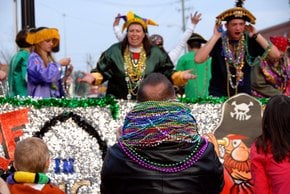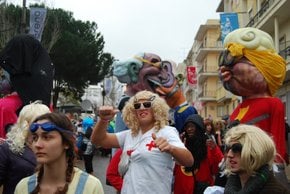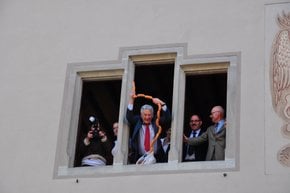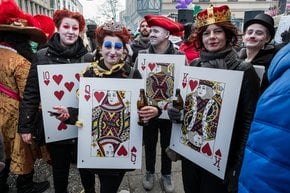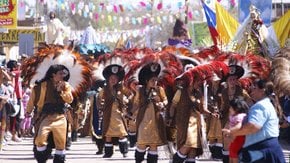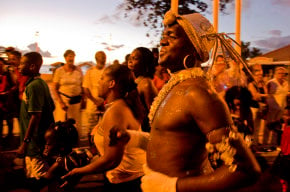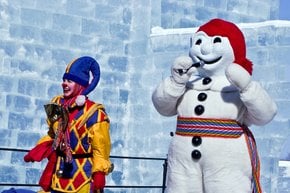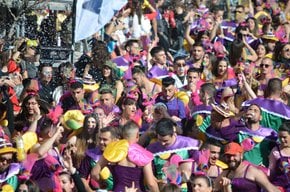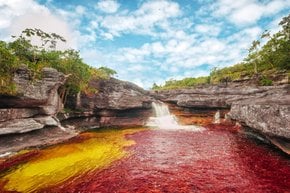Carnival of Blacks & Whites 2026 in Colombia
This is one the most ancient carnivals in South America, its origins date back to the times of Spanish rule. Be ready to be painted in different colors!
Dates: January 2–7
Colombia boasts a rich array of fairs and festivals celebrated across its diverse regions throughout the year. The annual festivities begin with the vibrant Black and White Carnival, one of the country's most iconic cultural events. For six days, the city of Pasto transforms into a lively hub of music, dance, and colorful parades, serving as the heart of this nationally significant celebration.
Celebration Highlights
The main feature of Blacks and Whites' Carnival (Carnaval de Negros y Blancos) is that people paint and color each other with anything they get their hands on—paint, polish, grease, talcum, chalk, and flour. January 5 is the day of the blacks, and January 6 is the day of the whites. The day of the blacks commemorates the time when enslaved Africans were liberated.
Main Events
Generally, the celebration in Pasto starts on December 28-30 with some fun Pre-Carnival events. On the first day, Carnival of Water, people of all ages stroll along the streets and throw buckets of water at each other. It is followed by the "Serenade to Pasto," where local bands and singers play the guitar or other string instruments. On January 2, the Black and White Carnival truly comes to life with spectacular parades, including the Carnavalito and the Castañeda Family Parade. Visitors can marvel at captivating performances of traditional provincial dances by groups of all ages dressed in vibrant costumes. However, the Carnival's most unforgettable moments unfold during its two final days, when participants paint themselves in black and white, joining the grand parade of elaborately decorated floats.
Entertainment
During the festival, you can enjoy local music, unique ancient costumes, and different performances by local, national, and international artists. Don't forget to buy a special protective mask, "antifaz," which can be found in any shop.
Origins
The origins of this carnival trace back to the colonial era when enslaved Black individuals requested their Spanish masters for a single day of freedom each year. This request was granted, and January 5 became the designated day. On this day, the Black community celebrated their heritage with vibrant festivities honoring their roots and ancestry. The joyful atmosphere was so infectious that white participants joined in, painting their faces black to be part of the celebration, which extended into the early hours of the next day.
Initially tied to the need for a festive respite within the labor calendar, this celebration grew over time, fueled by its cultural vibrancy and strong community support.
Significance
Today, the Black and White Carnival is recognized as the only Colombian Carnival with distinctly indigenous roots, enriched by the blending of diverse cultural influences that followed the country's independence. On September 30, 2009, UNESCO recognized the Black and White Carnival as one of the Masterpieces of the Oral and Intangible Heritage of Humanity, celebrating its rich cultural significance and unique traditions.
Carnival serves as a powerful symbol of unity, transforming private homes into communal spaces where carnival arts are created and shared. This vibrant event brings together people from all walks of life, providing a platform to express diverse perspectives and celebrate shared humanity. It stands as a testament to the collective aspiration for a future founded on mutual respect and tolerance.








